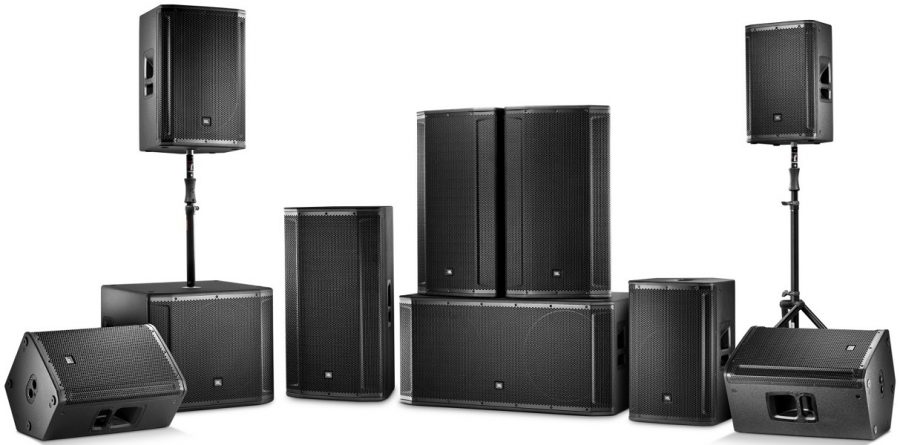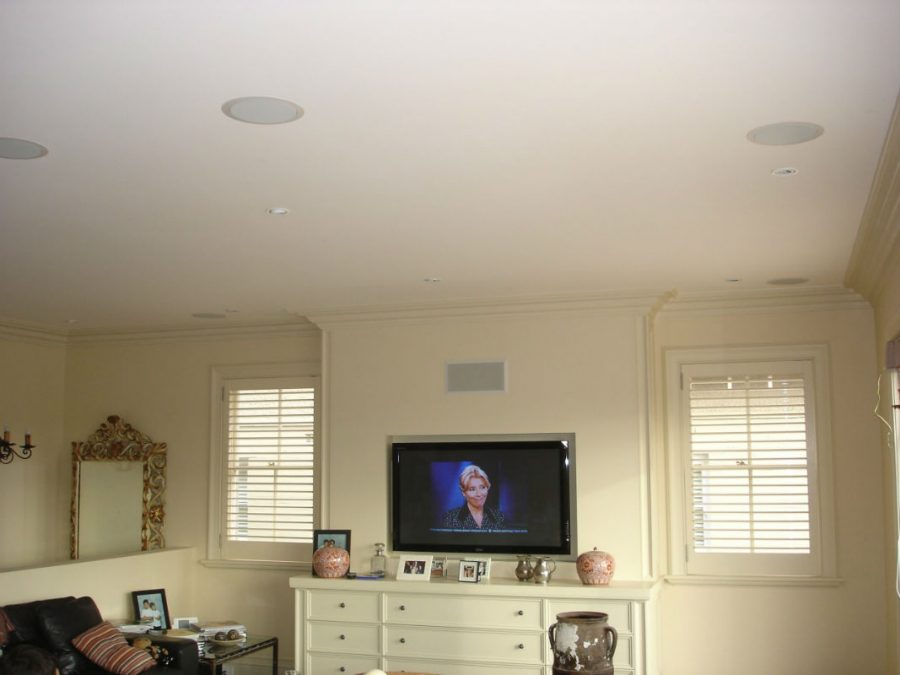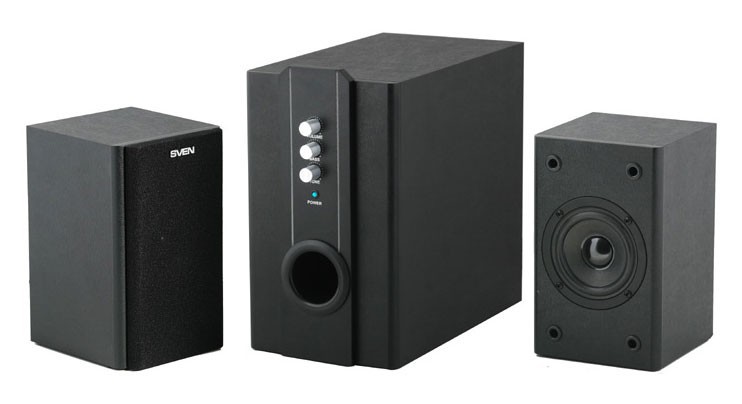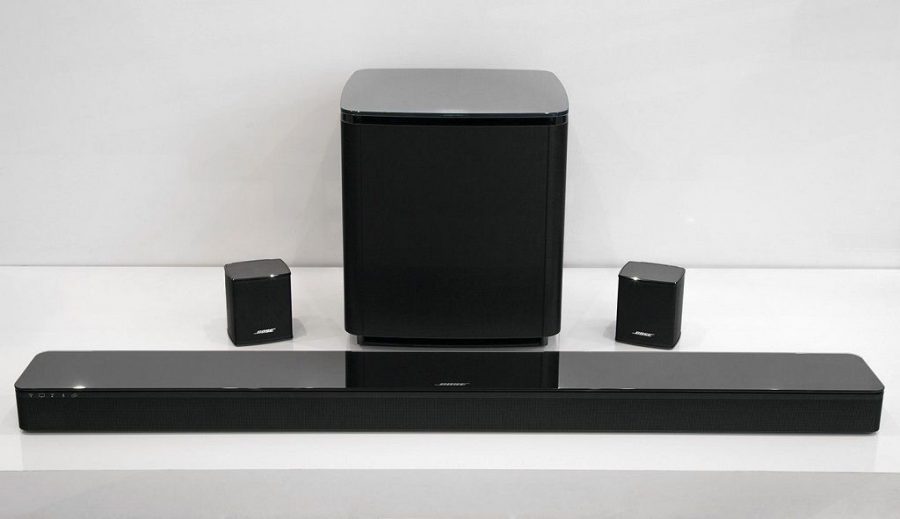Due to the variety of electronics on the market, choosing acoustics seems like a daunting task. The equipment is significantly different in types, characteristics, prices. How to choose a high-quality speaker system? To do this, you need to familiarize yourself with the basic parameters of musical equipment.
Content
Speaker Type

All sound systems are divided into two main types - active and passive. Consider the features of each of them.
Active
Active acoustic technology accommodates a built-in controlled amplifier unit. It adapts the sound signal coming from the player to the speakers. In fact, these are two different devices combined into one - speakers and an amplifier. Using the controls on the amplifier, you can change the volume level in the speakers. In addition, the “amp” makes it possible at any time to reduce the power of the UMZCH, thereby reducing the load on the speakers.
Active acoustics gives a better and clearer sound due to the direct connection of the amplifier to the speakers. Unlike passive type audio systems, much less heat in active parts. This prolongs their wear resistance.
Modern active-type music centers are equipped with a processor for control. If earlier the amplifier had a lot of toggle switches for adjusting the sound and required technical skills from the user, then today it can have all 3-4 settings - volume, tone, bass, high frequencies.
Active acoustics has two minuses:
- The need to use two wires (signal and power).
- If the amplifier unit fails, the speaker also becomes unusable.
Active music systems are practically not used in professional activities on large stages. But they are great for home and small rooms.
Passive
Passive speakers do not have any built-in modules and are ordinary speakers. The amplifier is selected for them separately. And here the difficulty arises - the speaker power must coincide with the power of the amplifier unit. The same speakers may sound different, depending on which “amp” is connected to them.
These types of speakers are used in the professional field. The main advantage is that they can be placed at large distances from the stage, while the amplification center, from which settings and control are carried out, is in a safe place. Even if something happens to the speakers, for example, they get wet in the rain, the amplifier will remain intact.
Minus of passive acoustics in strong heating of electronic components when working at high power.
Another important nuance - if you connect an amplifier to passive speakers that exceeds their power, then they can quickly fail.
Despite the slight superiority of passive speakers over active ones, the latter are still more suitable for home use.
Installation Type (Form Factor)
Musical equipment varies in form, installation type and number of channels. Acoustics for the home should be selected taking into account the free space. Today, multichannel surround speakers are popular. It can be systems 5.1 or 7.1, rarely 3.1 and 2.1. The first digits indicate the number of satellite speakers, and the odnerka is the low-frequency subwoofer. Separated channels create a surround sound, enveloping the space, immersing the listener directly in the center of this sound.
The shapes of the speakers and their installation may be different. Let's get acquainted with the main types of acoustics by type of location.
Outdoor seating
The floor-mounted audio system is usually quite bulky. Floor music systems are always full-range and have more than 3 bands. The number of speakers does not always coincide with the number of bands, so purely visually you should not focus on this. In order to achieve a more surround and deeper sound, some manufacturers install two bands on one speaker.
This technique is more sensitive, but at the same time more demanding on sound sources and amplifiers. In the floor speakers, quality cables are also important, eliminating interference and extraneous noise.
Another important factor for floor-mounted home audio systems is the body material. It is in such a technique that the latest achievements of engineering are most often used. One of the best developments is special ring tweeters. In combination with expensive materials, such as rare alloys with exceptional properties, developers are able to achieve perfect sound. High-quality models of columns always have marble or granite slabs at the bottom. Heavy material allows you to reduce the vibration of the columns themselves, walls and floors, as well as to eliminate unnecessary frequencies. Such a foundation is very stable. More budget models come with rubberized mats or other types of inexpensive stands for floor speakers.
Floor-mounted devices can be passive and active.
Rack Audio
The speakers on the racks also have a floor type of placement, but the speakers themselves rise 25-40 cm above the floor. The height of the racks in many models is adjustable. The design is designed in such a way that it gives the best sound from the recommended placement height. If you lower such a speaker directly to the floor, removing the stand, you can notice the distortion of sound and a decrease in bass.
Some manufacturers offer models with two options for placement - on racks and with a ceiling mount.
Most modern audio systems feature multi-channel full-range sound. Columns on racks are recommended for large halls and spacious rooms.
Ceiling placement

Shelf-quality acoustics are compact in size and ideal for apartments and premises up to 25 m / sq. Of course, there are professional ceilings for concert halls. But we are considering more precisely home audio systems.
Such speakers can be used for two-channel music systems, as well as as front satellites of multi-channel audio equipment. Speakers placed under the ceiling do not take up too much space.
Sound quality largely depends on the manufacturer and price category.
Satellites

The basic acoustic kit includes a pair of small speakers for placement on a table or shelves. There are models with a more extensive configuration (5.1 or 7.1). Without a subwoofer, you should not expect serious bass from the satellites. The maximum that such speakers are capable of is listening to music at low volume from a computer.
Satellites belong to the budget type of acoustics and are unlikely to interest those who are demanding on the sound and want to choose a truly powerful audio system for themselves.
Soundbars

Soundbars, as types of speakers, have appeared relatively recently. Stylish design solutions focused on a modern interior and minimalism. The soundbar is a soundbar with a multi-channel, rarely stereo system. A feature of the device is the combination of all audio elements (speakers, amplifier, card reader) in one compact case.
Despite the minimalistic look, such systems produce full multi-channel sound equal to 7.1 and 5.1 kits.
Of the minuses, it is worth noting the relatively low power, high cost and rather weak bass. Soundbars are a good solution for a small room and connecting to a TV.
Body material
This factor is very important, since each material has a different effect on sound reproduction.
So, we’ll figure out what the speaker enclosures are made of:
- Plastic is the most budget and widespread type of cases. Plastic allows you to create original design solutions. But at the same time, it is not the best facing material for columns. With high power speakers, it begins to rattle. In addition, it absorbs noise poorly.
- Particleboard is a good solution for high-quality speaker systems. It practically does not distort sound waves, has good insulation and a low degree of vibration.
- Wood - premium speakers are made from this material. It is hardly possible to find a better lining for speakers than natural wood. It ennobles sound and absorbs noise.
- Glass - increasingly, among the models, transparent speakers began to appear, differing in their original appearance. But glass is poorly suited for such purposes and the speakers will sound high quality only if they are finished with an additional layer of noise insulation.
- Metal - most often uses aluminum alloys for these purposes. The speakers are lightweight and durable. Aluminum can reduce resonance and improve the reproduction of high frequencies of the sound spectrum.
- Stone - granite, marble or slate is used for facing the speakers. The stone case greatly improves sound quality, but may be too heavy.
Power
Many associate power with volume. But these are different indicators, although interrelated. The power parameter to a greater extent shows the reliability of electronic components. For example, small speakers with a power of 5-6 W can "choke" and play much worse than large speakers with the same power.
Thus, the number of watts an audio system possesses does not mean the volume of the sound being emitted, but the power of the audio signal being conducted to the speaker. Therefore, small speakers at very high power simply overheat and break.
You need to choose an indicator depending on the channel of sound, the size of the speakers and the quality of the electronics.
It is worth saying that, in general, the power indicator of the speaker system is uninformative, since its volume is measured by the sound pressure specified in decibels.
frequency range
This indicator is one of the most significant. The human ear perceives only a certain range of sound frequencies in the range of 16-20 Hz to 18-20 kHz. Accordingly, the columns should have parameters corresponding to these figures.
The average indicator of high-quality speakers is from 20 to 20,000 Hz.
Dimensions
In the columns, it is not the size of the case that matters, but the characteristic of the diffusers. The higher it is, the better the speaker captures low sound waves. The smallest sizes from 25 mm to 80 mm reproduce high frequencies and almost do not capture low frequencies.
Dimensions within the range of 100-150 mm diffusers are well suited for home theaters and audio systems.
In professional speakers, the diameter of the diffusers can be 20-40 cm.
Acoustic design
Acoustic design refers to the external speaker design and speaker layout. According to the rules, low bass is located at the bottom, high bass at the very top.
Regarding the style - it all depends on the personal preferences of the buyer. Today, manufacturers offer a wide variety of styles, from classic to avant-garde. It is worth paying attention to the presence of soundproof materials inside the case and the dividing elements between the speakers.
Do not forget that the design of the case affects the sound quality. Therefore, despite the originality of some models, it is still better to give preference to designs that are simpler in design.
Manufacturers
The best manufacturers of speakers available in our market are:
- Jbl
- Pioneer
- Yamaha
- Heco
- Sony
- Sonus faber
Before you buy a speaker system, be sure to check its sound, volume level and other parameters. Do not forget about the warranty card and technical instructions for connecting in a language you understand.